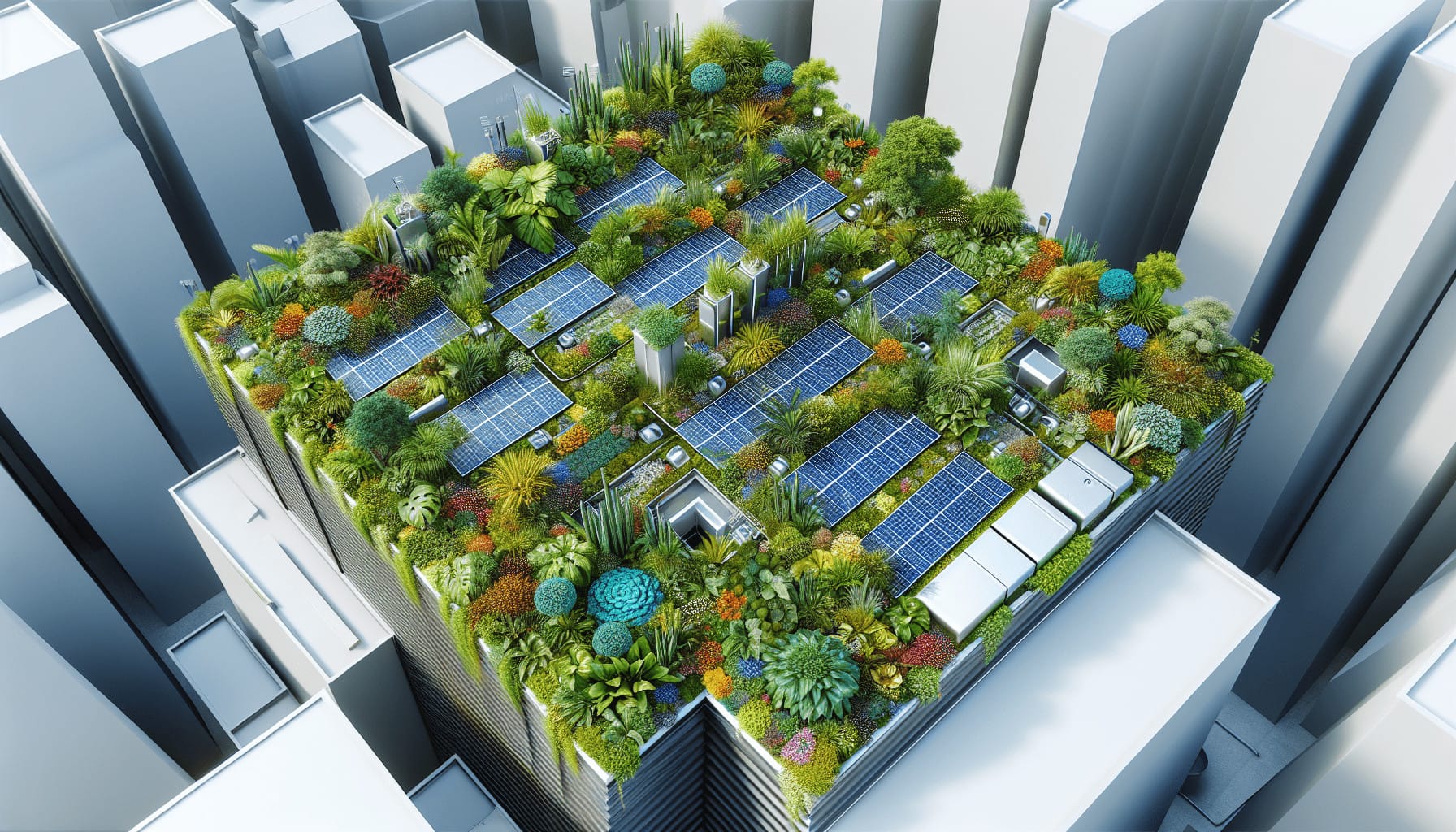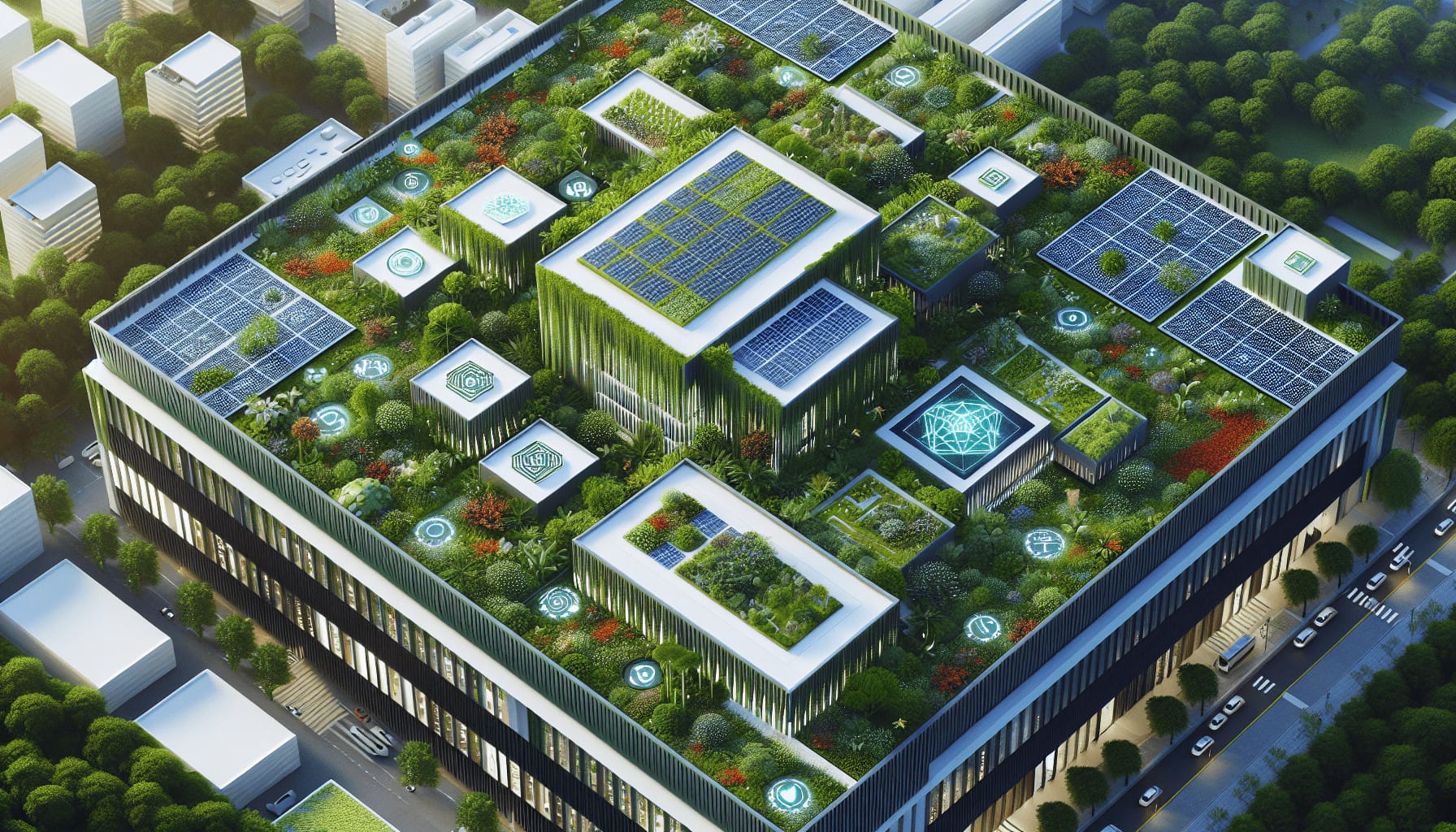Have you ever wondered how the vast expanse of green roofs, with their lush vegetation and ecological benefits, are thriving amidst urban landscapes? These green havens on top of city buildings not only enhance aesthetic appeal but are also a boon for environmental sustainability. However, ensuring their health and efficiency relies heavily on monitoring technologies. Let’s delve into innovative technologies for monitoring green roof performance and discover how they play a pivotal role in maintaining the health of these verdant spaces.
The Rise of Green Roofs
Green roofs have emerged as a sustainable solution to urban challenges, providing benefits ranging from temperature regulation to improved air quality. These roofs are increasingly popular in cities where green space is limited. Their ability to manage stormwater, reduce heat load, and support biodiversity makes them an essential component of modern urban planning. However, maximizing these benefits requires careful monitoring.
Ecological Benefits at a Glance
Green roofs offer numerous benefits that extend beyond aesthetics. They contribute to environmental health by absorbing rainwater, providing insulation, creating habitats for wildlife, and capturing pollutants. These benefits enhance urban living conditions, helping cities combat climate change while promoting biodiversity.
| Benefit | Description |
|---|---|
| Stormwater Management | Reduces runoff and flooding. |
| Temperature Regulation | Offers insulation, reducing energy consumption. |
| Air Quality Improvement | Captures pollutants and carbon dioxide. |
| Biodiversity Support | Provides habitat for urban wildlife. |
Understanding Green Roof Performance Metrics
To ensure the success of green roofs, several performance metrics must be monitored. These include plant health, water retention, thermal regulation, and biodiversity levels. Assessing these metrics allows for timely interventions that lead to thriving green roofs.
Key Performance Indicators
- Plant Health: Vital for maintaining aesthetic and functional aspects of green roofs.
- Water Retention: Important for efficient stormwater management.
- Thermal Effectiveness: Influences building insulation and energy savings.
- Biodiversity: Indicates the ecological success of green spaces.

Innovative Monitoring Technologies for Green Roofs
Advancements in technology have paved the way for innovative solutions to monitor these green spaces effectively. By integrating cutting-edge technologies, stakeholders can receive real-time data that facilitate efficient maintenance, ensuring the longevity and robustness of green roofs.
Remote Sensing Technology
Remote sensing involves the use of satellite or aerial imagery to gather data on green roofs. This technology provides a macro view of vegetation health and growth patterns. By capturing multi-spectral images, remote sensing helps assess plant health and detect areas needing attention. The data allow for timely interventions, reducing the need for on-site inspections.
Internet of Things (IoT) Sensors
IoT sensors are becoming increasingly prevalent in monitoring green roofs. These sensors collect real-time data on moisture levels, temperature, and soil conditions. With IoT technology, property managers and environmentalists can monitor various parameters with ease. Real-time alerts for potential issues such as waterlogging or dry patches ensure swift corrective actions.
| Sensor Type | Function |
|---|---|
| Moisture Sensors | Track water content in the substrate. |
| Temperature Sensors | Monitor thermal regulation benefits. |
| Light Sensors | Assess the intensity and duration of sunlight exposure. |
Drones for Aerial Inspection
Drones are an efficient tool for the quick and thorough inspection of green roofs. Equipped with high-resolution cameras and sensors, drones can access hard-to-reach areas and provide accurate and up-to-date data. This technology reduces the need for manual inspection and ensures minimal disturbance to the vegetation.
Machine Learning and AI
Machine learning algorithms and artificial intelligence contribute to the predictive modeling of green roof performance. These technologies can analyze historical and real-time data, predicting future trends and potential issues. AI-driven analytics enable optimization of maintenance schedules and resource allocation, ensuring maximum efficiency and effectiveness.
Challenges in Monitoring Green Roofs
While innovative technologies offer numerous advantages, challenges persist in monitoring green roofs. Ensuring accuracy, addressing technological limitations, and managing costs are among the key challenges faced.
Data Accuracy and Reliability
The reliability of data from sensors and devices is crucial. Calibration issues or equipment malfunctions can lead to inaccurate data, affecting decision-making processes. Regular maintenance and verification of equipment are necessary to maintain data integrity.
Integration of Various Technologies
Seamlessly integrating different technologies can be complex. Ensuring that remote sensing, IoT, drones, and data analytics work harmoniously requires proficient planning and execution. The lack of standardized protocols may pose initial setup challenges.
Cost and Resource Management
The deployment of advanced technologies involves substantial initial investments. Additionally, operational costs, including maintenance and personnel training, must be managed efficiently to justify the return on investment. Effective cost management strategies are essential for long-term sustainability.

The Future of Green Roof Monitoring
As urbanization continues to rise, the importance of green roofs is increasingly recognized. Future trends suggest a growing reliance on sophisticated technologies and sustainable practices to monitor and maintain these urban green spaces.
Advances in Sensor Technology
Future developments in sensor technology are likely to focus on enhancing accuracy and reliability while reducing costs. New sensors with advanced materials and smart capabilities may offer better performance metrics, tailored monitoring solutions, and easier integration.
Expansion of AI and Machine Learning Applications
AI and machine learning are poised to revolutionize green roof monitoring further. As these technologies evolve, they will offer deeper insights into ecological patterns, automate data analysis, and enhance predictive modeling accuracy.
Role of Policy and Regulation
Governments and regulatory bodies play a crucial role in promoting the adoption of green roofs and associated monitoring technologies. Policies aimed at encouraging green infrastructure development and sustainable urban planning can drive further innovations and investments in the field.
Conclusion
The integration of innovative technologies into the monitoring of green roofs is crucial for optimizing their performance and ensuring their sustainability. With advancements in remote sensing, IoT, drones, and AI, stakeholders can effectively monitor green roof health, maximize ecological benefits, and overcome urban environmental challenges. As the demand for sustainable urban solutions grows, these technologies will continue to evolve, offering new possibilities for the future of green roofs. By embracing these innovations, you contribute to creating greener, more resilient cities that thrive both economically and ecologically.
Your understanding of green roof technologies not only lays the groundwork for effective management but also supports a broader commitment to environmental sustainability. So, as you look to the skies and the confluence of nature with the built environment, consider how these technologies can transform urban landscapes and foster a healthier planet.
